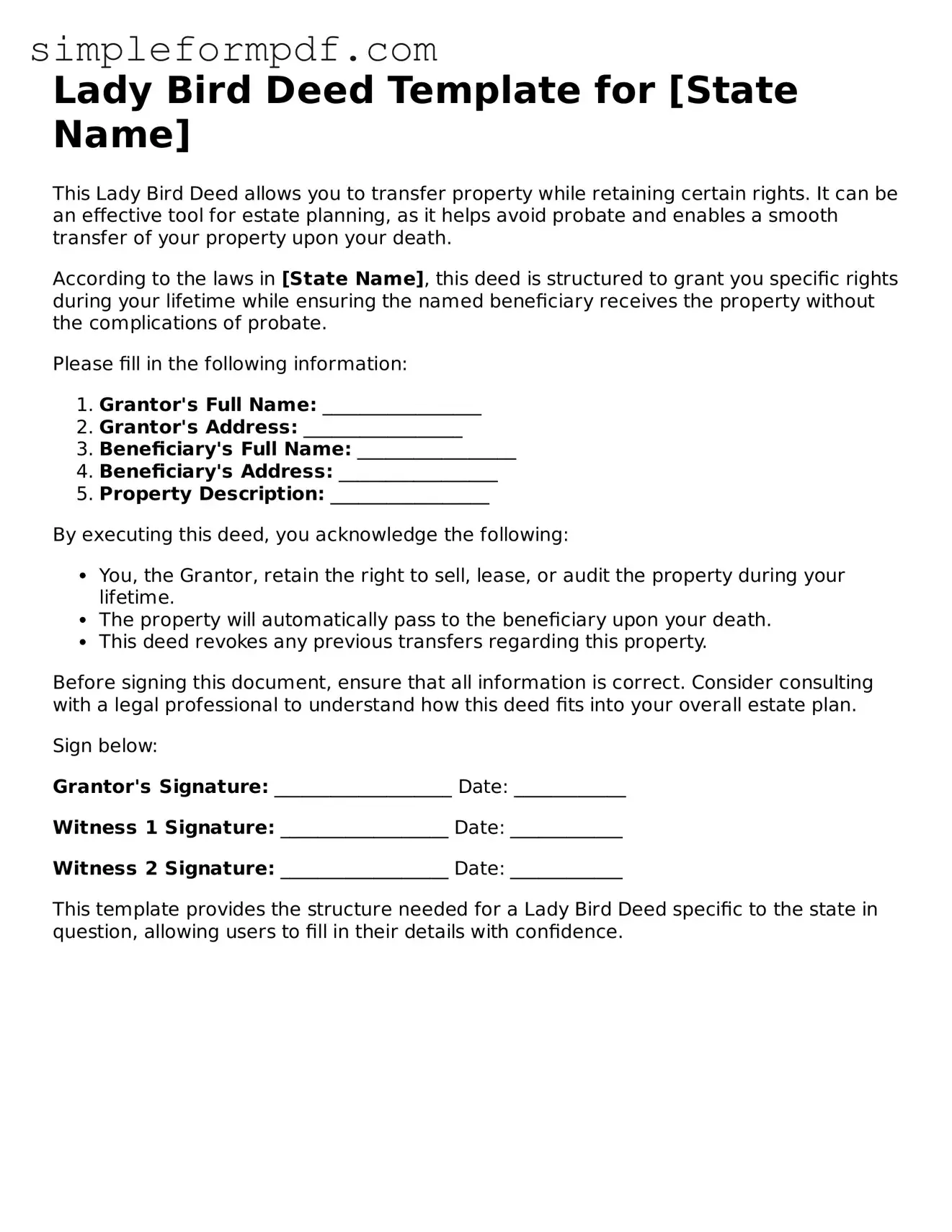Lady Bird Deed Template for [State Name]
This Lady Bird Deed allows you to transfer property while retaining certain rights. It can be an effective tool for estate planning, as it helps avoid probate and enables a smooth transfer of your property upon your death.
According to the laws in [State Name], this deed is structured to grant you specific rights during your lifetime while ensuring the named beneficiary receives the property without the complications of probate.
Please fill in the following information:
- Grantor's Full Name: _________________
- Grantor's Address: _________________
- Beneficiary's Full Name: _________________
- Beneficiary's Address: _________________
- Property Description: _________________
By executing this deed, you acknowledge the following:
- You, the Grantor, retain the right to sell, lease, or audit the property during your lifetime.
- The property will automatically pass to the beneficiary upon your death.
- This deed revokes any previous transfers regarding this property.
Before signing this document, ensure that all information is correct. Consider consulting with a legal professional to understand how this deed fits into your overall estate plan.
Sign below:
Grantor's Signature: ___________________ Date: ____________
Witness 1 Signature: __________________ Date: ____________
Witness 2 Signature: __________________ Date: ____________
This template provides the structure needed for a Lady Bird Deed specific to the state in question, allowing users to fill in their details with confidence.
